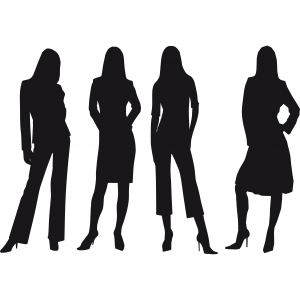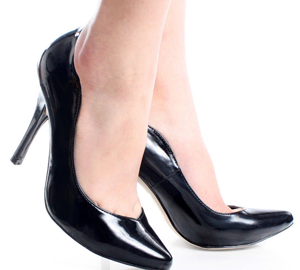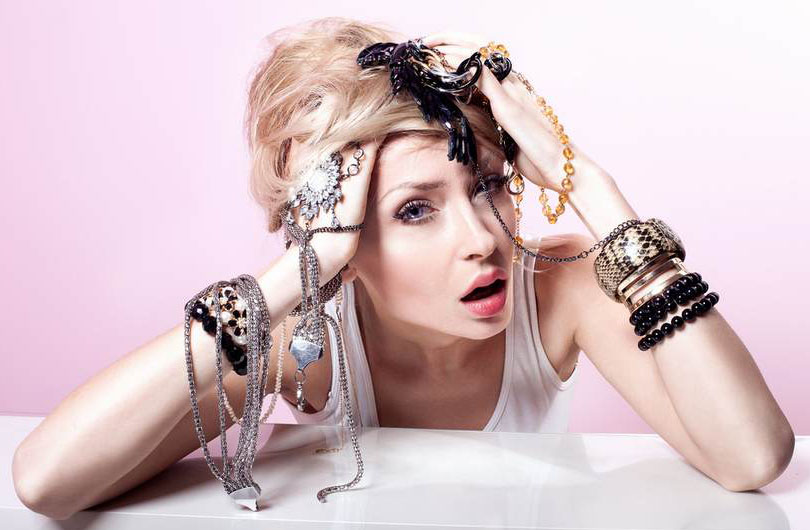 Unfortunately, appropriate female attire within the financial industry is a rather controversial topic. Although business casual is becoming increasingly more acceptable, this really depends on each employer’s preferences. In the summer, this is even more difficult. Which undermines professional credibility more: dishevelled, hot and uncomfortable; or barelegged and bare-shouldered, but well-groomed and intact? Annoyingly, the answer isn’t absolute. Each company has different policies and when you go for an interview or start a new job, you may not yet be aware of these codes. Here are some standard style tips to help avoid an office wardrobe
Unfortunately, appropriate female attire within the financial industry is a rather controversial topic. Although business casual is becoming increasingly more acceptable, this really depends on each employer’s preferences. In the summer, this is even more difficult. Which undermines professional credibility more: dishevelled, hot and uncomfortable; or barelegged and bare-shouldered, but well-groomed and intact? Annoyingly, the answer isn’t absolute. Each company has different policies and when you go for an interview or start a new job, you may not yet be aware of these codes. Here are some standard style tips to help avoid an office wardrobe
faux pas.
Appearance
Clothing
- Keep it classy and conservative.
- Black is always a fail-safe colour, but don’t overdo it. You don’t want to look like you are going to a funeral. Break up solid black with tasteful accessories or pastel and earth-toned accents.

- Skirts should adhere to the fingertip rule. When your arms are down and relaxed, your skirt should be no shorter than the tip of your middle finger.
- Suits are always great, but make sure they don’t look too pre-packaged and boring. Mixing and matching your outfit is fine when done tastefully.
- Most professionals can spot a cheap suit from a mile off. With that being said, properly fitting attire is more professional-looking than an ill-fitting brand-name suit bought just for the expensive price tag.
- Although most companies find trouser suits completely acceptable, it is always best to wear a skirt suit in the beginning if you are unsure.
- Make sure your trousers aren’t too short. You don’t want to look like you’ve borrowed someone else’s clothes or that you can’t afford to buy trousers that fit.
- A tailored jacket can add power.
- Button-up shirts and blouses are usually deemed as a conservative, professional standard; but beware of gaping. If your shirt splits even slightly at the chest, opt for a different top.
- Sweaters are a good alternative to a shirt, especially in winter—provided it is long-sleeved.
- Don’t wear anything low-cut. Your neckline should never be more than four inches below your collarbone.
- No maxi dresses.
- Bare shoulders are objectionable to some employers, so be cautious when starting a new job until you know your employer’s stance.
- In colder weather, a trench coat looks professional.
- Make sure all items are pressed/ironed and wrinkle-free.
- If possible, keep an emergency outfit in the office in case of spills, rips, broken heels, unexpected client meetings, etc. Always be prepared.
 Shoes
Shoes
- When in doubt, wear pumps.
- No backless shoes.
- Make sure your shoes have no scuff marks.
- Make sure your heels aren’t too high. Generally, that means keeping them under 3 inches (unless you’re very petite and you’re wearing a trouser suit, but still try not to go above 3.5 inches).
- Avoid chunky heels and platforms.
- Only wear shoes with one material, e.g. all-leather shoes with no metal embellishments.
- Don’t wear shoes that clank. You don’t want people craning around to see if there’s a horse clopping through the hallway.
Hair & Make-up
- Pull back your hair, especially if you are prone to playing with it.
- Don’t have any hair in your face unless it’s a neatly tamed fringe.

- Wear discreet hair accessories, if any at all.
- Do not have roots. Yes, it can be costly to get your roots touched up, but it can look unprofessional if you don’t.
- Keep make-up minimal. Do wear it, but do not cake it on. Make it look as natural as possible. It may be wise to invest in higher-quality make-up so it doesn’t smear down your face throughout the day.
- Eyeliner should be limited. If you absolutely must wear eyeliner, make sure it is done lightly.
- Do not wear any shimmery make-up—particularly shimmery eyeshadows.
- Nails should be trimmed neatly and kept short. Don’t wear bright nail polish. Some people also frown upon black nail polish. French manicures, nudes and pale pinks are the most accepted colours.
- Lipstick should be kept to a minimum. Discreet red lipstick is as far as you should push it.
- Lip gloss should not be too shiny. You don’t want people to be able to see their reflections in your lips.
Accessories
- Avoid status symbols, such as Rolex™ watches or draping yourself in diamonds.
- Do not wear lots of perfume. This is one of the top complaints from interviewers and clients, because not everyone likes the same scents and some people have allergies to perfume odour. If you do wear perfume, make sure it can’t be smelt from more than three feet away.
 Only wear one earring per ear.
Only wear one earring per ear.- Take out facial piercings.
- No ostentatious jewellery. Pearls always look conservative.
- Bring an extra pair of tights in your bag in case you get a ladder.
- If wearing a belt, coordinate it with your shoes.
- Neck scarves are okay if they are in a light material, but don’t go overboard. You don’t want to look like a flight attendant.
- Bags are best kept simple and classic. It’s better to spend more money on one, better-quality bag than buying multiple cheaper bags.
- Keep documents in a portfolio or briefcase—don’t carry them loosely.
General Etiquette
Don’t draw unwanted attention. Never give anyone a reason to undermine your success. Try to observe the attire of other employees within the company. When you do this, veer more towards the style of junior-level employees, as managing directors and partners have more leeway and freedom with their image. If you are going for an interview, try not to look more “expensive” than the interviewer—it can come across as arrogant.
In terms of client impressions, clients find image very important. Even if the client is worth a billion pounds and they wear jeans and a T-shirt to your meetings, they still expect you to be formal. It shows that you respect both the client and your profession.
It is best to keep your personal life out of the office. Keep all conversation topics professional. Take into consideration the reaction of the people around you, as you have to be able to sit next to them every day for very long periods. If you say something that could be taken offensively, day-to-day life will become lot more complicated. Make sure to stay calm and collected at all times, whether you’re dealing with peers, superiors or clients. Getting flustered or angry will get you nowhere.
One final piece of fashion advice: if you are ever hesitant over which outfit to wear, go for the more conservative and classic option. In the world of finance, overly trendy apparel is not received as well as it might be in other industries. Make people notice you chiefly because of your business merit—don’t let anyone accredit your achievements to your attire.
